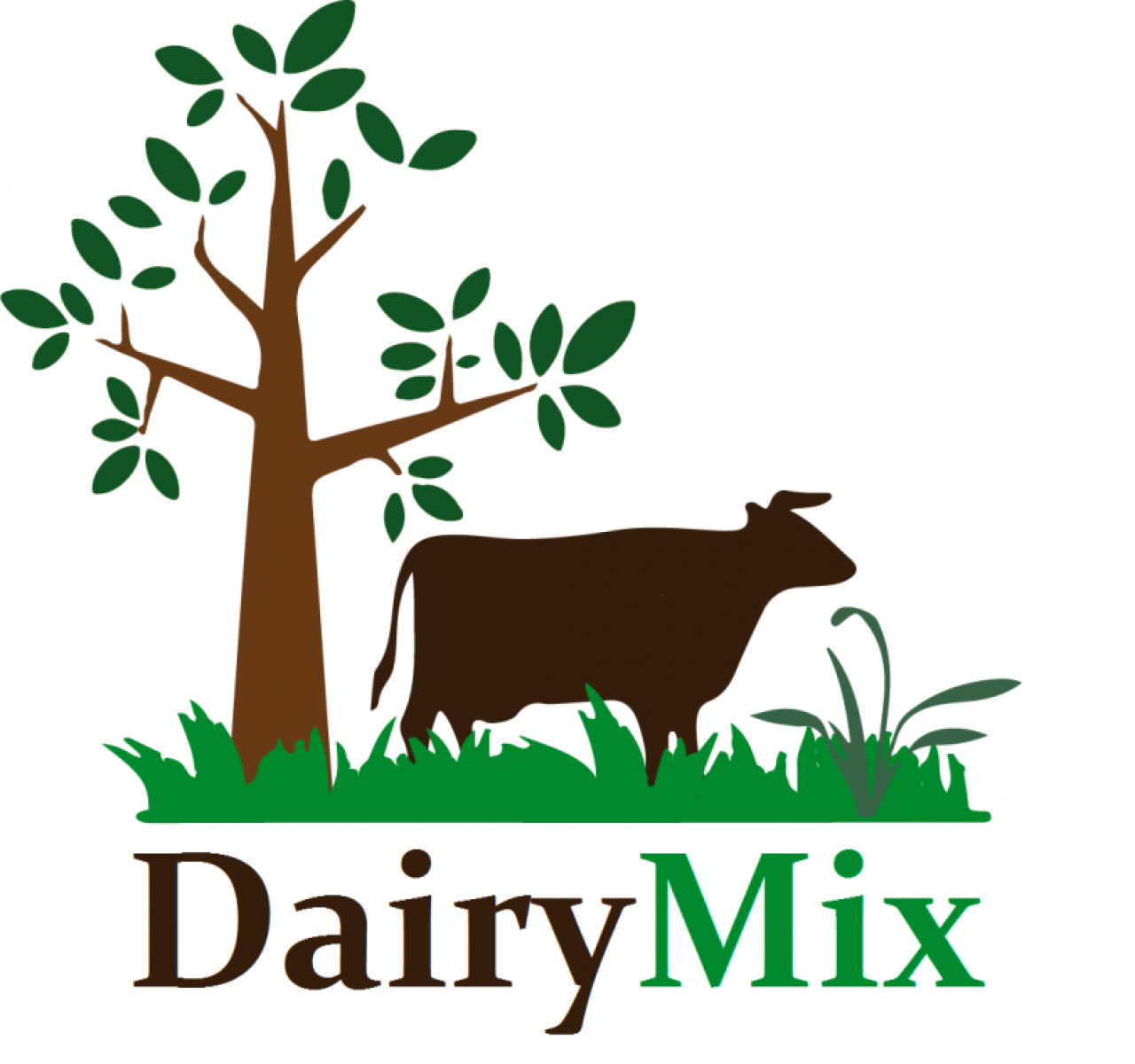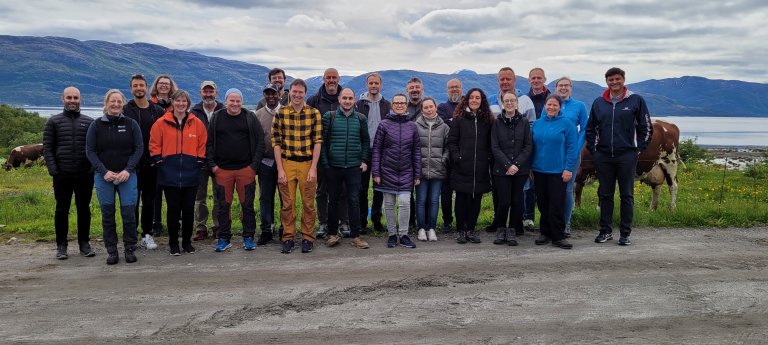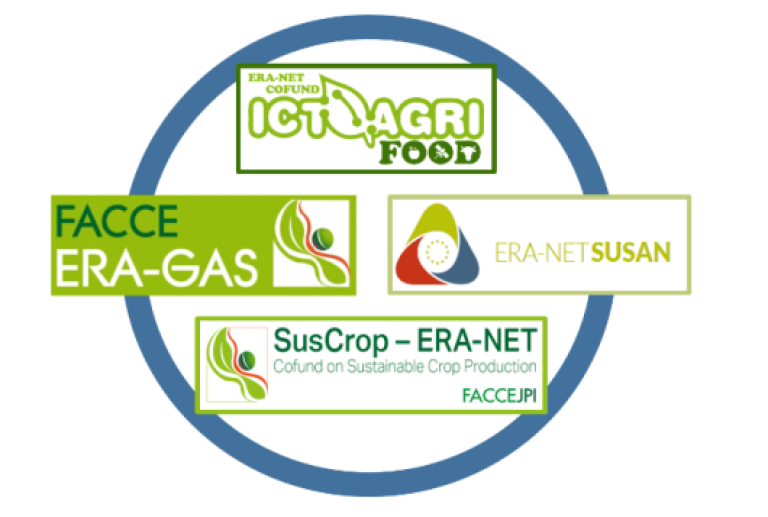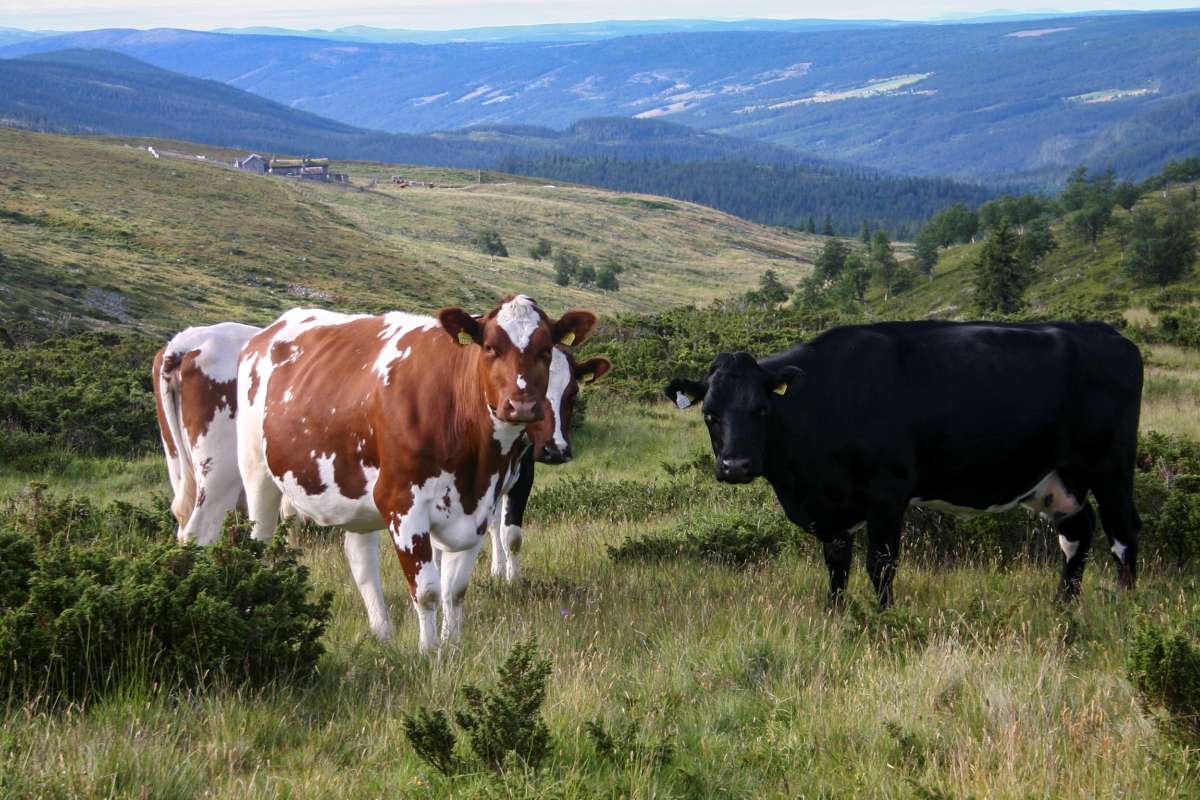Division of Food Production and Society
DairyMix. Multi-criteria assessment, decision support and management tools for sustainable circular mixed farming systems for dairy production

End: aug 2025
Start: mar 2022
A total of 10 research institutions from Europe and Latin America have joint forces to develop a tool for dairy farmers. The overall aim is to increase sustainability and reinforce climate friendly mixed crop and dairy production systems.
More information
Information about the project from the funding bodyProject participants
Ellen Elverland Bjørn Egil Flø Habtamu Alem Lennart Kokemohr Klaus Mittenzwei Divina Gracia P. Rodriguez
| Status | Concluded |
| External project link | DairyMix website |
| Start - end date | 01.03.2022 - 31.08.2025 |
| Project manager | Grete H. M. Jørgensen |
| Division | Division of Food Production and Society |
| Department | Grassland and Livestock |
| Total budget | 3583000 |
| Funding source | The Joint Call of the Cofund ERA-Nets SusCrop (Grant N° 771134), FACCE ERA-GAS (Grant N° 696356), ICT-AGRI-FOOD (Grant N° 862665) and SusAn (Grant N° 696231) |
Det main coordinator is Prof. Barbara Amon from the Leibniz Institute for Agricultural Engineering and Bioeconomy (ATB) in Germany. NIBIO coordinates contact with case study farms and data in Norway and leads the work package 5.
The DairyMix project aims to use multi-criteria assessment, and develop decision support, modelling and management tools for sustainable circular mixed farming systems for dairy production.
The project is structured in five work packages.
WP1: Coordination and management.
WP2: Case studies, data from the extensive DATAMAN database, Eurostat data and data from OTICE, the online barn climate and emission control tool will be collected and analysed.
WP3: Detailed modelling analysis on carbon and nutrient utilization and circularity of mixed farming systems for dairy production.
WP4: brings WP2 and WP3 together for a multi-criteria assessment of mixed farming systems for dairy production based on indicators for circularity and efficient resource use developed in WP2 and WP3.
WP5: Details a range of communication and dissemination activities and hosts the interactive web application - the MilKey/DairyMix platform - to analyse farm data and to evaluate effects of changes in farming practice at farm and regional level with regards to environmental, economic and societal sustainability indicators.
The output of this project will have farmers and other stakeholders in the primary sector as target group, and will also be relevant for society and policy makers. DairyMix will be a major step forward in achieving GHG mitigation and circularity between cropping systems and dairy production systems with flexible and context specific solutions being developed for key European areas and for Latin America.


Publications in the project
Authors
Hilde Margrethe Helgesen Grete H. M. Jørgensen Bjørn Egil Flø Habtamu Alem Divina Gracia P. Rodriguez Ellen Elverland Ragnhild BorchseniusAbstract
I en tid der mange melkebønder sliter tungt og jobber mye på bekostning av familie og helse, blir spørsmålet om det er mulig å drive bærekraftig melkeproduksjon stadig mer aktuelt.
Authors
Federico Dragoni Lorraine Balaine Serena Bonizzi Anna Sandrucci Kobe Coorevits David Janke Giorgio Ragaglini Klaus Mittenzwei Lennart Kokemohr Aurélie Wilfart Emma Soulé Joanna Fratczak-Muller Xabier Díaz de Otálora Wilfried Winiwarter Grete H. M. Jørgensen Barbara AmonAbstract
Poster til GGAA 2025 konferansen
Authors
Federico Dragoni Lorraine Balaine Serena Bonizzi Anna Sandrucci Kobe Coorevits David Janke Giorgio Ragaglini Klaus Mittenzwei Lennart Kokemohr Aurélie Wilfart Emma Soulé Joanna Fratczak-Muller Xabier Díaz de Otálora Wilfried Winiwarter Grete H. M. Jørgensen Barbara AmonAbstract
Dairy production systems are an essential backbone of European agriculture but have become highly specialized, heavily relying on external inputs, lacking resilience and meeting a desirable level of circularity to a limited extent. When livestock is re-coupled with grasslands and diversified crops, dairy production systems provide valuable ecosystem services through their interaction with land, vegetation and soil. The aim of the DairyMix project (www.dairymix.eu) is to address this topic through systems thinking, defining region-specific concepts for sustainable and circular integrated crop-forestry-livestock systems for dairy production in Europe and Latin America. Data from a wide range of dairy case study farms were collected in Germany, Italy, France, Norway, Ireland, Poland, Brazil and Argentina. To assess the environmental performances of the case studies, Life Cycle Assessment (LCA) was carried out; economic and social sustainability indicators were also calculated. A multi-criteria assessment framework was implemented, and models covering the cropping system and other farm components were integrated to compute and assess circularity indicators. Precision farming technologies, such as the ICT-based Online Tool for monitoring Indoor barn Climate, animal stress and emission (OTICE), were developed, contributing to tailored solutions and management tools for regional agricultural challenges. Agroforestry practices were assessed, and qualitative in-depth interviews were conducted in selected case studies. In particular, the farmers’ willingness to implement agroforestry, mixed farming and improve nutrient circularity was investigated. Preliminary findings are as follows: 1) Agroforestry, as a valuable multifunctional practice (e.g., increasing biodiversity, carbon sequestration, animal welfare), can provide alternative feed resources for ruminants. Nutritional value and digestibility tests on leaves of five tree species in Northern Italy revealed that mulberry (Morus nigra L.) has a nutritional profile comparable to lucerne or polyphytic meadows. This and other species can potentially be included as an alternative fodder in dairy cow diets. 2) Farmers are motivated by both environmental concerns and profitability. According to our findings, they intuitively value circular and sustainable practices and show attachment to the land, often originating from farm inheritance. Key barriers to implementing sustainable and circular practices included insufficient earnings, high workload, workforce shortages, and limited access to insurance. Bureaucracy, frequent policy changes, and unstable expectations further hindered the adoption of such practices. Farmers notably emphasized the lack of consumer knowledge about production processes and product origins, highlighting the need for more education and awareness. The project results are being incorporated into the DairyMix online platform. The DairyMix platform will display results from: i) the multi-criteria assessment, allowing the users to evaluate the effect of varying the weights of the sustainability principle considered; ii) the modelling of mitigation measures and alternative cropping scenarios in representative dairy production systems across Europe and Latin America. Users will be asked for feedback, which will be incorporated into the platform. In contrast to “one-fit-all” solutions, the DairyMix interactive platform will present a range of options for the sustainability of farming systems for dairy production, favouring the adoption of informed decisions for circular and integrated crop-forestry-livestock in different regions.
Authors
Federico Dragoni M. Seyedalmoosavi Lorraine Balaine Serena Bonizzi Anna Sandrucci Nicola Alessi Giorgio Ragaglini Klaus Mittenzwei Lennart Kokemohr Aurelie Wilfart Emma Soule Joanna Fratczak-Muller Xabier Diaz De Otalara Monika Suchowska-Kisielewicz Grete H. M. Jørgensen Barbara AmonAbstract
No abstract has been registered
Authors
Habtamu AlemAbstract
Dairy farming significantly contributes to global greenhouse gas (GHG) emissions, particularly methane (CH4). This study evaluates the performance of Norwegian dairy farms and the socio-economic factors influencing emissions over 30 years (1991-2020). We assessed dairy farm performance by evaluating both efficiency and environmental impact, with a particular focus on reducing methane emissions. This is crucial for achieving sustainable and resource-efficient farming within a circular economy framework. Methane emissions were calculated using the Intergovernmental Panel on Climate Change (IPCC) Tier 2 methodology, incorporating country-specific data on dairy cattle diet and production. Utilizing a comprehensive panel dataset of 692 dairy farms, we employed a parametric model to analyze the intricate input-output relationships within dairy production. Our findings reveal an average eco-efficiency score of 0.95, suggesting a promising potential for a 5% reduction in resource use and CH4 emissions without compromising production levels. Socio-economic factors, such as land tenure, farm experience, and government subsidies, were found to exert a positive influence on both farm performance and GHG emissions. Conversely, higher debt-to-asset ratios were associated with lower performance. Our research underscores the necessity for policies that support improvements at the farm level, such as facilitating knowledge transfer among farmers and increasing access to subsidies for environmentally friendly technologies. Future research should delve into other environmental impacts, including nitrogen emissions and biodiversity, to establish a more comprehensive framework for sustainable agricultural practices. By identifying opportunities for reducing GHG emissions while maintaining productivity, this study offers valuable insights for policymakers and industry stakeholders seeking to enhance the sustainability of the dairy sector in Norway and beyond.
Authors
Grete H. M. Jørgensen Ellen Elverland Bjørn Egil Flø Habtamu Alem Divina Gracia P. Rodriguez Anette Tjomsland Spilling Ragnhild BorchseniusAbstract
No abstract has been registered
Authors
X. Díaz de Otálora B. Amon L. Balaine F. Dragoni F. Estellés G. Ragaglini M. Kieronczyk Grete H. M. Jørgensen A. del PradoAbstract
No abstract has been registered
Authors
Xabier Díaz de Otálora Agustín del Prado Federico Dragoni Lorraine Balaine Guillermo Pardo Wilfried Winiwarter Anna Sandrucci Giorgio Ragaglini Tina Kabelitz Marek Kieronczyk Grete H. M. Jørgensen Fernando Estellés Barbara AmonAbstract
No abstract has been registered
Authors
Aurelie Wilfart Vincent Baillet Lorraine Balaine Xabier Díaz de Otálora Federico Dragoni Dominika Joanna Krol Joanna Frątczak-Müller Anna Rychła Divina Gracia P. Rodriguez James Breen Vasileios Anestis Cathal Buckley Habtamu Alem Wilfried Winiwarter Nouraya Akkal-Corfini Barbara AmonAbstract
No abstract has been registered
Abstract
No abstract has been registered
Authors
Habtamu AlemAbstract
No abstract has been registered
Authors
Habtamu AlemAbstract
No abstract has been registered
Authors
Habtamu AlemAbstract
No abstract has been registered
Authors
Habtamu AlemAbstract
No abstract has been registered

